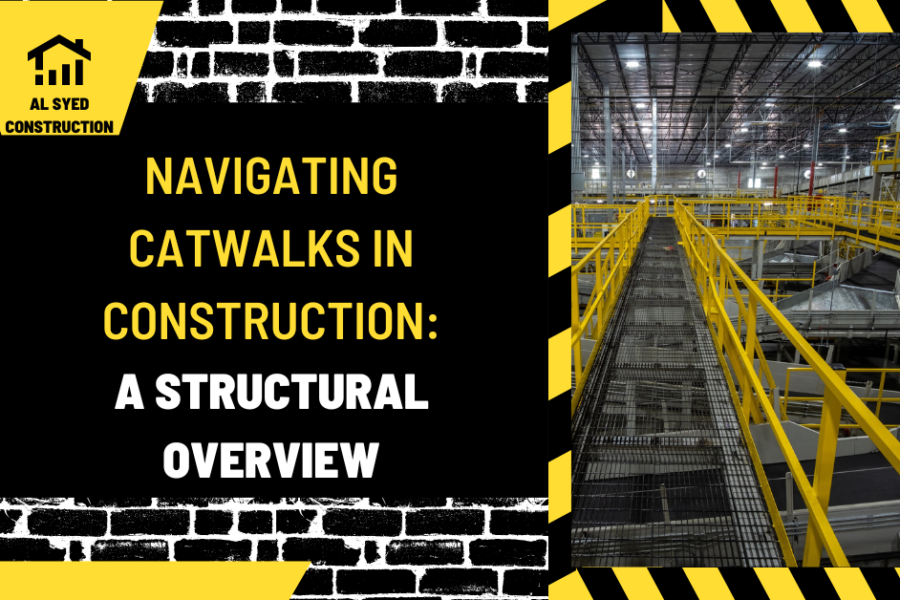Navigating Catwalks in Construction: A Structural Overview
Table of Contents
Introduction
The term “catwalk” is often associated with fashion runways, but in the construction industry, it holds a different significance. Catwalks are integral components of construction sites, providing safe and efficient access to various areas. This article explores the concept of catwalks in construction, their types, uses, and the safety measures associated with them.
What is a Catwalk in Construction?
Definition
In construction, a catwalk is a narrow, elevated walkway used to provide access to areas that are hard to reach, such as the upper levels of scaffolding, the top of a tank, or the interior of a ceiling. Catwalks are designed to support the weight of workers and their equipment while ensuring safety and mobility.
Purpose of Catwalks
Catwalks serve several purposes in construction, including:
- Access: Providing workers with access to elevated or confined areas.
- Safety: Offering a secure platform for workers to perform tasks at height.
- Efficiency: Facilitating the movement of materials and equipment across the site.
Types of Catwalks in Construction
Catwalks can vary in design and material, depending on their intended use and the requirements of the construction project:
Permanent Catwalks
- Structural Catwalks: Integrated into the building’s design, often used in industrial settings for maintenance access.
- Architectural Catwalks: Aesthetic elements that also serve as walkways, commonly found in theaters or exhibition halls.
Temporary Catwalks
- Scaffolding Catwalks: Installed on scaffolding structures to provide access during construction or renovation.
- Mobile Catwalks: Portable walkways that can be moved and adjusted as needed on the construction site.
Safety Measures for Catwalks in Construction
Ensuring the safety of workers on catwalks is paramount. Key safety measures include:
- Guardrails: Installing guardrails on both sides of the catwalk to prevent falls.
- Non-slip Surfaces: Using materials with traction to reduce the risk of slips.
- Load Capacity: Designing catwalks to support the expected load, including workers and equipment.
- Regular Inspections: Conducting frequent inspections to identify and address any potential hazards.
Conclusion
Catwalks are essential components of construction sites, providing safe and efficient access to various areas. Understanding the different types of catwalks and implementing proper safety measures are crucial for ensuring the well-being of workers and the smooth progress of construction projects.
FAQs
- What is the difference between a catwalk and a walkway in construction?
- A catwalk is a narrow, elevated walkway specifically designed for access in construction or industrial settings, while a walkway is a broader term that can refer to any path for walking, including ground-level paths.
- Are there specific regulations for catwalk construction?
- Yes, there are regulations and standards that govern the construction and use of catwalks, including requirements for load capacity, guardrails, and materials. These regulations vary by region and industry.
- How wide is a typical catwalk in construction?
- The width of a construction catwalk can vary, but it is typically between 18 to 24 inches (45 to 60 cm) to allow safe passage for workers.
- Can catwalks be used for storage in construction?
- Catwalks are primarily designed for access and should not be used for storage, as this can create tripping hazards and exceed the load capacity.
- What materials are commonly used for constructing catwalks?
- Catwalks can be made from various materials, including steel, aluminum, and wood, depending on the requirements of the project and the need for durability, strength, and portability.




